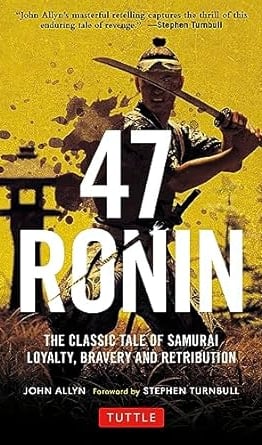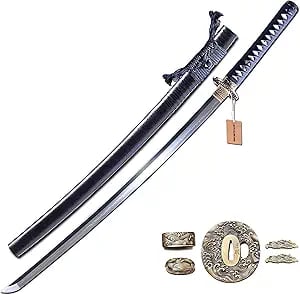The 47 Ronin
Unveil the compelling story of the 47 Ronin. A tale of loyalty, honor, and calculated vengeance in 18th-century Japan. Uncover how these samurai defied the odds to avenge their lord, embodying the true spirit of Bushido. Perfect for history enthusiasts seeking a gripping and timeless narrative.
HISTORICAL FIGURESHISTORIC EVENTS
Michael Keller
12/2/202413 min read
The Samurai's Oath
In 18th century Japan, a betrayal set the stage for one of the most unforgettable stories of samurai honor. The kind of honor that isn’t just a code, but a way of life, so strong that it drives a group of men to take matters into their own hands, no matter the cost. This isn’t a tale of blind vengeance, but of men willing to sacrifice everything to restore their lost dignity.
In the bustling city of Edo, 47 ronin (samurai without a master) find themselves on a mission that will demand the ultimate price. [1] Betrayed by one of their own, they are left with only one option: to act. With patience, planning, and unwavering loyalty, they prepare to face the impossible. But what happens when revenge is the only way to make things right?
This is the story of the 47 Ronin, a tale of betrayal, courage, and an unbreakable bond to honor that continues to captivate the world even today.
The World of the Samurai
The year was 1701, and in Edo, Japan, society was governed by a rigid set of principles that defined every aspect of life. [2] The samurai, the elite warrior class, adhered strictly to the Bushido code, a moral compass that dictated loyalty, bravery, and honor above all else. To the samurai, their lord was everything. The bond between a samurai and his master wasn’t just a professional relationship, it was a sacred oath. [3] A breach of this loyalty was the gravest dishonor, and it would echo through the lives of those involved, often with dire consequences. In this world, a man’s reputation was his most valuable possession, and the idea of disgrace was an inescapable burden.
In this highly stratified society, where loyalty to one’s lord and family was paramount, two men would clash, setting off a chain of events that would leave a permanent mark on Japan's history. Lord Asano Naganori, the daimyo (lord) of the Akō Domain, was a man of integrity, holding fast to the values of the samurai. However, his life would be irrevocably altered by the actions of another man: Lord Kira Yoshinaka. Kira was no stranger to power and influence; a cunning official, he had built his wealth and status through dishonest means, betraying the trust of those around him for personal gain. His behavior was that of a schemer, quick to manipulate and exploit others to secure his position within the court, no matter the cost to their honor.
Kira’s corrupt dealings were well-known among the court and samurai circles. [4] He was a master of deceit, using his position to extort money from those in his power, offering favors in exchange for bribes, and generally fostering an atmosphere of distrust. But it wasn’t just his underhanded tactics that made him so despised; it was the way he toyed with the pride of those around him. Asano Naganori, a man of honor, found himself humiliated by Kira's repeated slights. [5]
In the intricate world of the Tokugawa shogunate, where political influence and alliances shaped the power structure, Lord Kira held the advantage. Kira had significant sway within the shogunate's bureaucracy, his high position allowing him to manipulate the situation to his favor. [6] Asano, despite being a daimyo, was far less entrenched in the political world, making him vulnerable to Kira’s schemes. The shogunate’s strict code of conduct also worked against Asano. In the rigid, hierarchical society of feudal Japan, any breach of decorum or violence, particularly in a place as sacred as the shogunate palace, was an unforgivable offense. Asano’s anger was mounting, but the very system that should have protected him instead trapped him.
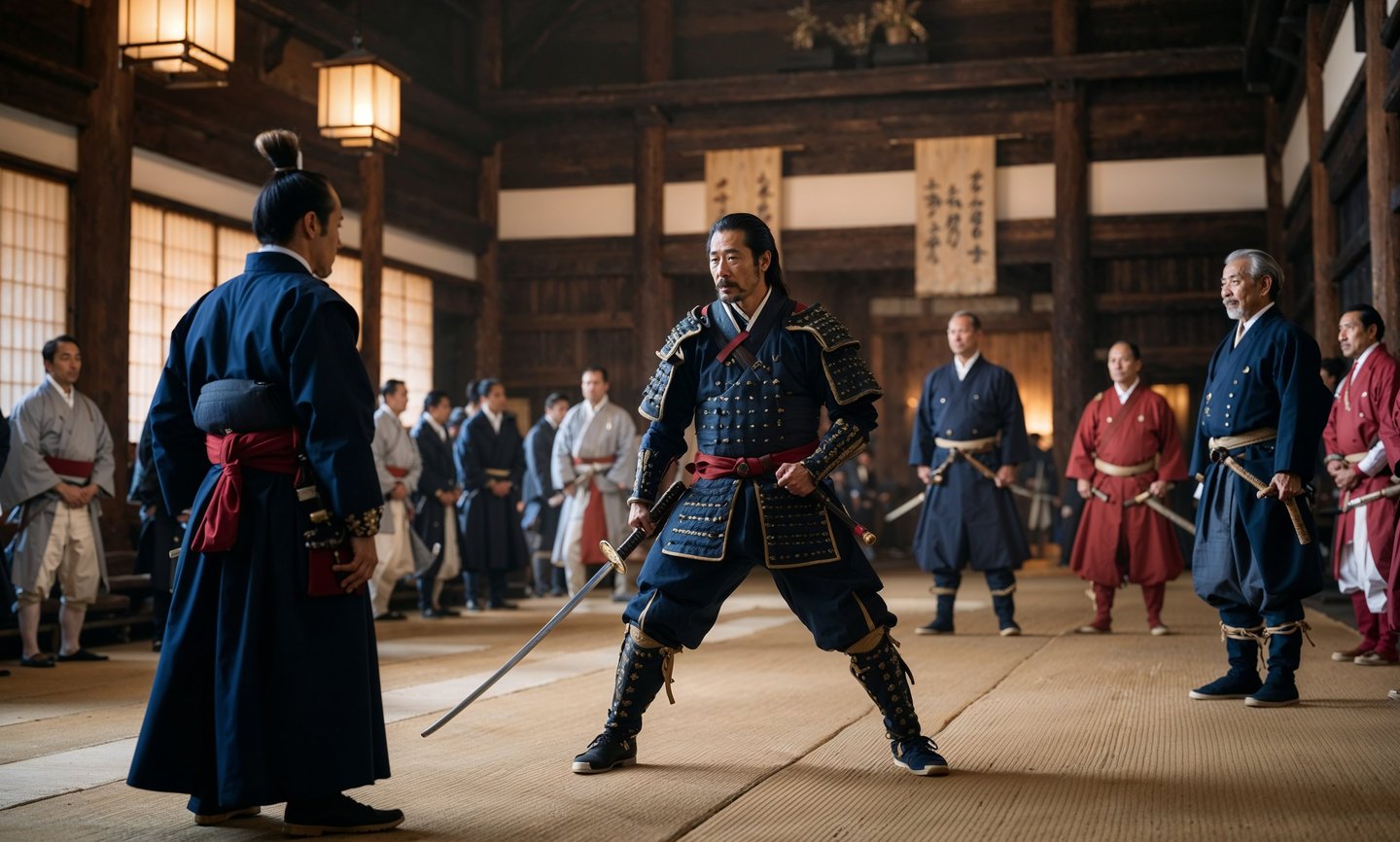

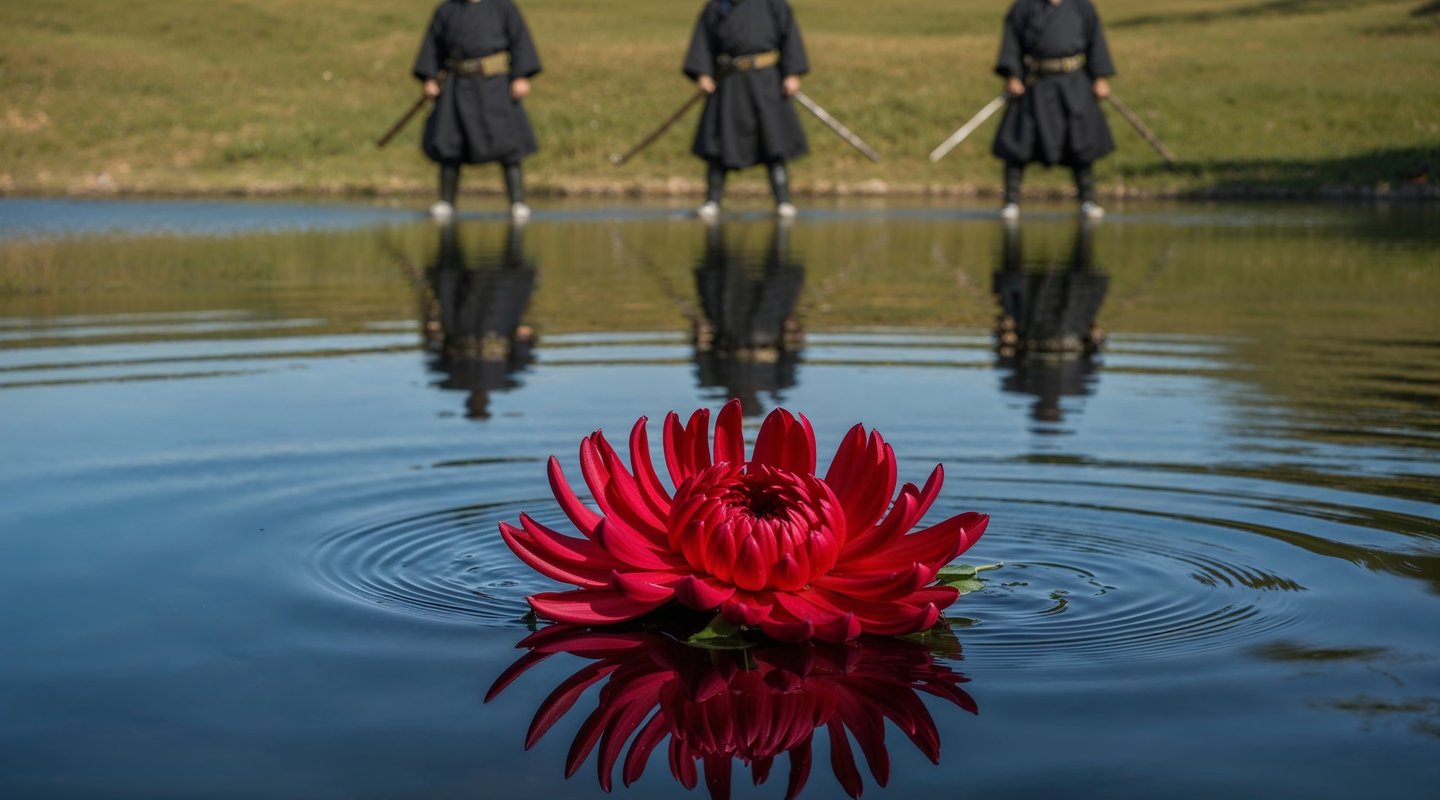

A Clash of Honor: The Attack and Its Consequences
Over time, Kira had pushed Asano to the edge, humbling him repeatedly, making subtle insults and derisions that were impossible to ignore. One fateful day, in the presence of high-ranking officials, Asano’s simmering anger reached its boiling point. Unable to contain his rage any longer, Asano drew his sword and attacked Kira. [7] The blow was swift, but Kira, who had anticipated this moment, was able to defend himself and was not wounded. The consequences of this action, however, were immediate and brutal. Asano had violated the most sacred rule of samurai conduct: violence in the shogunate palace, especially against a fellow official, was unthinkable. The officials present had no choice but to uphold the law and immediately respond to this grave breach. [8]
Asano’s fate was sealed within moments. The shogunate’s response was swift and unforgiving, Asano was condemned to seppuku, ritual suicide, as punishment for his violent outburst. Though not forced to commit seppuku immediately, the sentence was delivered almost right away, and Asano was ordered to take his own life shortly after the attack. His family was disgraced, and his lands and title were seized, leaving his household in ruin. The honor that Asano had so fiercely protected throughout his life was now destroyed by a single, violent act. [9]
But Asano’s death was not the end. It was the spark that ignited the fury of his most loyal samurai. These 47 men, bound by their unwavering commitment to their lord, could not accept the dishonor that had befallen him. [10] They saw the decision to punish Asano not just as a miscarriage of justice, but as a betrayal of everything they stood for as samurai. They were bound by the unbreakable tenets of Bushido: loyalty, honor, and vengeance. It was now their duty to avenge the death of their master, no matter the cost. With honor in their hearts and revenge on their minds, the 47 ronin began their quest for justice, setting in motion a legendary tale of loyalty, sacrifice, and retribution.
The End of the Road
Though their mission was complete, the ronin knew their fate had been sealed from the moment they took up arms. They had broken the shogunate’s laws by taking revenge without official sanction, and no act of honor could erase that. [20] Yet, they did not run from their responsibility. Instead, they marched to the authorities and turned themselves in, demonstrating their unwavering commitment to Bushido, the way of the samurai.
The authorities faced a dilemma. While the ronin had clearly violated the law, their bravery, loyalty, and adherence to samurai principles earned them widespread respect. After much deliberation, the shogunate condemned the ronin to seppuku, a ritual aligned with their status as samurai. For samurai, seppuku was far more than a death sentence, it was a final act of control over one’s fate and an opportunity to restore personal and familial honor. [21]
By taking their own lives, they transformed what could have been a disgraceful end into a powerful statement of loyalty and integrity. In the seppuku ritual, the samurai prepared themselves with dignity, often writing a death poem and performing the act in the solemn presence of witnesses. Their commitment to their lord and their principles remained unbroken, even in death.
The graves of the 47 ronin were placed at Sengaku-ji Temple in Edo, where they would rest together for eternity. [22] Their story, immortalized in Japanese history, became a symbol of loyalty, sacrifice, and the complexities of justice within the rigid codes of samurai culture. Today, their graves serve as a site of reverence, where visitors honor the courage and convictions of these legendary warriors.
Japan’s most famous tale of loyalty, vengeance, and honor, The 47 Ronin, tells the legendary story of a group of samurai who risk everything to avenge their fallen master. This unforgettable narrative has inspired countless retellings, including a Hollywood film starring Keanu Reeves, and remains a powerful symbol of courage and sacrifice in Japanese history.
The story begins in 1701, when Lord Asano, a nobleman of great integrity, strikes a court official during a heated dispute. His punishment is swift and unforgiving—he is ordered to commit ritual suicide (harakiri), his lands are seized, his family exiled, and his loyal samurai are left masterless, becoming ronin. For years, these 47 ronin lived as outcasts, appearing to accept their fate, but secretly plotting revenge. Their ultimate act of retribution not only honored their master but also cemented their place in history as an enduring example of loyalty and the samurai code of honor, bushido. In 47 Ronin, John Allyn’s masterful retelling, enriched by Stephen Turnbull’s insightful foreword, brings this timeless story to life with historical accuracy and vivid detail.
A Patient and Calculated Revenge
At the heart of the 47 ronin was Ōishi Yoshio, the group’s steadfast leader. His calm demeanor, strategic mind, and unyielding resolve in the face of their collective tragedy would ultimately define their path toward vengeance. Ōishi wasn’t just any samurai, he was the senior retainer to Lord Asano. His relationship with Asano was one of loyalty, earned through years of service and mutual respect. [11]
Ōishi’s role as the leader of the 47 ronin was a natural progression. As one of Asano’s most senior and capable retainers, he had earned the admiration and trust of his fellow samurai. The ronin, had all lost their positions and lands following Asano’s forced seppuku, but they were bound by their devotion to their late lord. In the absence of their master, it was Ōishi’s leadership that galvanized them, guiding them through their darkest days and keeping their resolve intact.
The 47 ronin were not all students of Asano, but they were indeed a core group of his loyal retainers and samurai. The number 47 was not arbitrary, it was the number of samurai who had been directly under Asano's command and who had chosen to seek revenge for their fallen lord. These men had been Asano's trusted warriors, each of them bound to him by loyalty, personal ties, and a shared commitment to the Bushido code. Some were samurai who had served Asano in various capacities, while others were close allies or fellow retainers who had spent years in Asano's service, earning their place within his domain. [12]
Ōishi, unlike some of the other ronin, who were eager for immediate revenge, made a conscious decision to bide his time and approach the situation with patience. He knew that an impulsive act would likely fail and tarnish the honor they sought to restore. After the tragic events, the ronin scattered across Edo, assuming lowly, inconspicuous roles, many as merchants, laborers, and even beggars. They blended into the fabric of ordinary society, keeping their true identities hidden from Kira’s watchful eyes. [13]
By disguising themselves and living humble lives, the 47 ronin not only protected their identities but also waited for the right moment to strike. Ōishi, in particular, went to great lengths to gain access to Kira’s mansion. Disguised as a merchant, he began gathering crucial information about his enemy’s movements, weaknesses, and routines. Every move the ronin made was deliberate and calculated, a far cry from the impetuous rage that had led to Asano’s death. [14]
As the months passed, the group’s resolve never wavered. Their lives of humility and concealment were sacrifices for a greater purpose: the destruction of Kira’s life, and the restoration of their lord’s honor. When the time was finally right, they would strike with precision, knowing that their mission was not just about vengeance, but about righting a grievous wrong and ensuring that Asano’s name and honor would not be forgotten.
After nearly two years of waiting and planning, the 47 ronin, united by honor and loyalty, would finally make their move. [15] Their fury would be unleashed in a calculated strike, one that would bring justice to Kira, avenge their lord’s death, and leave a legacy of loyalty that would echo throughout history.
The Night of Reckoning
That night, the streets of Edo fell unnervingly silent. Kira’s mansion, usually bustling with activity, stood as an unwitting fortress, unaware of the storm approaching. The 47 ronin, armed with swords and driven by unwavering loyalty, crept toward their target under the cover of darkness. Their plan was simple but deadly: catch Kira unawares, show no mercy, and reclaim their honor.
Kira's estate was well-guarded by watchmen and retainers, some of whom were well-armed and experienced. It’s believed that the ronin were outnumbered, however the exact count of their adversaries is unknown. With their combined training, discipline, and fervor, they pressed forward with unshakable resolve. [16]
Each ronin infiltrated the estate under the cover of night, signaling their unity with passwords. [17] Stealth was paramount, and they moved like shadows, taking advantage of the darkened hours to penetrate the mansion’s defenses. They silently disarmed the guards and neutralized anyone who posed a threat, minimizing the noise of battle.
However, stealth was only part of their strategy. As they drew closer to Kira’s quarters, a confrontation became inevitable. The ronin’s ferocity in battle was unmatched. Despite the overwhelming odds, they fought like a united force, cutting down anyone who stood in their path. Kira’s personal guards, though trained, were no match for the sheer determination and skill of the ronin.
After a fierce struggle that saw several guards fall, the 47 finally reached Kira’s room. The air was thick with tension as they burst through his door. Kira was caught off-guard and the ronin showed no mercy. It is believed that Ōishi Yoshio, the leader of the group, struck the fatal blow, beheading Kira in a swift and decisive move. [18] As Kira crumpled to the floor, the ronin stood victorious, yet the cost was heavy.
The assault on Kira’s mansion was executed with remarkable precision, and despite the chaos of the battle, all 47 ronin survived. [19] While some sustained injuries during the fight, their collective resolve and careful planning ensured that none of them fell. Their mission was a resounding success: Kira lay dead, and the honor of their master was restored. The ronin’s survival only underscored the discipline and unity that had guided their every move.
The ronin’s sacrifice compels us to ask: What would we risk to uphold our values, protect those we serve, and honor the commitments that define who we are?
Share your thoughts with us. For feedback or inquiries, email: contact@archivinghistory.com. We look forward to hearing from you!
Join Archiving History as we journey through time! Want to stay-tuned for our next thrilling post? Subscribe!
Follow us on Facebook, Instagram, YouTube and TikTok for captivating insights, engaging content, and a deeper dive into the fascinating world of history.
Source(s):
[1] Turnbull, Stephen. "The 47 Ronin Story: The Samurai Revenge." Osprey Publishing, 2004.
[2] Totman, Conrad. The Tokugawa World. London: Routledge, 2009.
[3] Inoue, Yasushi. Bushido: The Soul of Japan. New York: Tuttle Publishing, 2002.
[4] Turnbull, Stephen. "Samurai Armies 1467–1649." Osprey Publishing, 2003.
[5] Kawasaki, Kenji. "The Samurai: A Military History." Tuttle Publishing, 2011.
[6] Marius B. Jansen. "The Making of Modern Japan." Harvard University Press, 2000.
[7] Stewart, William. The 47 Ronin: The Story of the Samurai's Revenge. Chicago: University of Chicago Press, 1980.
[8] Lindsay, Ian. Samurai Law: Codes of Conduct in Feudal Japan. Oxford: Oxford University Press, 1995.
[9] Bishop, Peter. The Tokugawa Shogunate: Political and Cultural Consolidation. Princeton: Princeton University Press, 2011.
[10] Turnbull, Stephen. The Samurai Sourcebook. London: Cassell, 2000.
[11] Wilson, George. The Samurai's Revenge: Ōishi Yoshio and the 47 Ronin. New York: HarperCollins, 2006.
[12] Stewart, William. The 47 Ronin: The Story of the Samurai's Revenge. Chicago: University of Chicago Press, 1980.
[13] Turnbull, Stephen. The Samurai Sourcebook. London: Cassell, 2000.
[14] Lindsay, Ian. Samurai Law: Codes of Conduct in Feudal Japan. Oxford: Oxford University Press, 1995.
[15] Morris, James. The Seven Samurai and the Fate of the 47 Ronin. New York: Viking Press, 1999.
[16] Turnbull, Stephen. Samurai Warriors: The Golden Age of Japan's Legendary Heroes. London: Osprey Publishing, 2013.
[17] Bishop, Peter. The Tokugawa Shogunate: Political and Cultural Consolidation. Princeton: Princeton University Press, 2011.
[18] Wilson, George. The Samurai's Revenge: Ōishi Yoshio and the 47 Ronin. New York: HarperCollins, 2006.
[19] Schirokauer, Conrad. A Brief History of Japanese Civilization. Belmont, CA: Wadsworth Publishing, 2008.
[20] Lindsay, Ian. Samurai Law: Codes of Conduct in Feudal Japan. Oxford: Oxford University Press, 1995.
[21] Stewart, William. The 47 Ronin: The Story of the Samurai's Revenge. Chicago: University of Chicago Press, 1980.
[22] Turnbull, Stephen. The Samurai Sourcebook. London: Cassell, 2000.
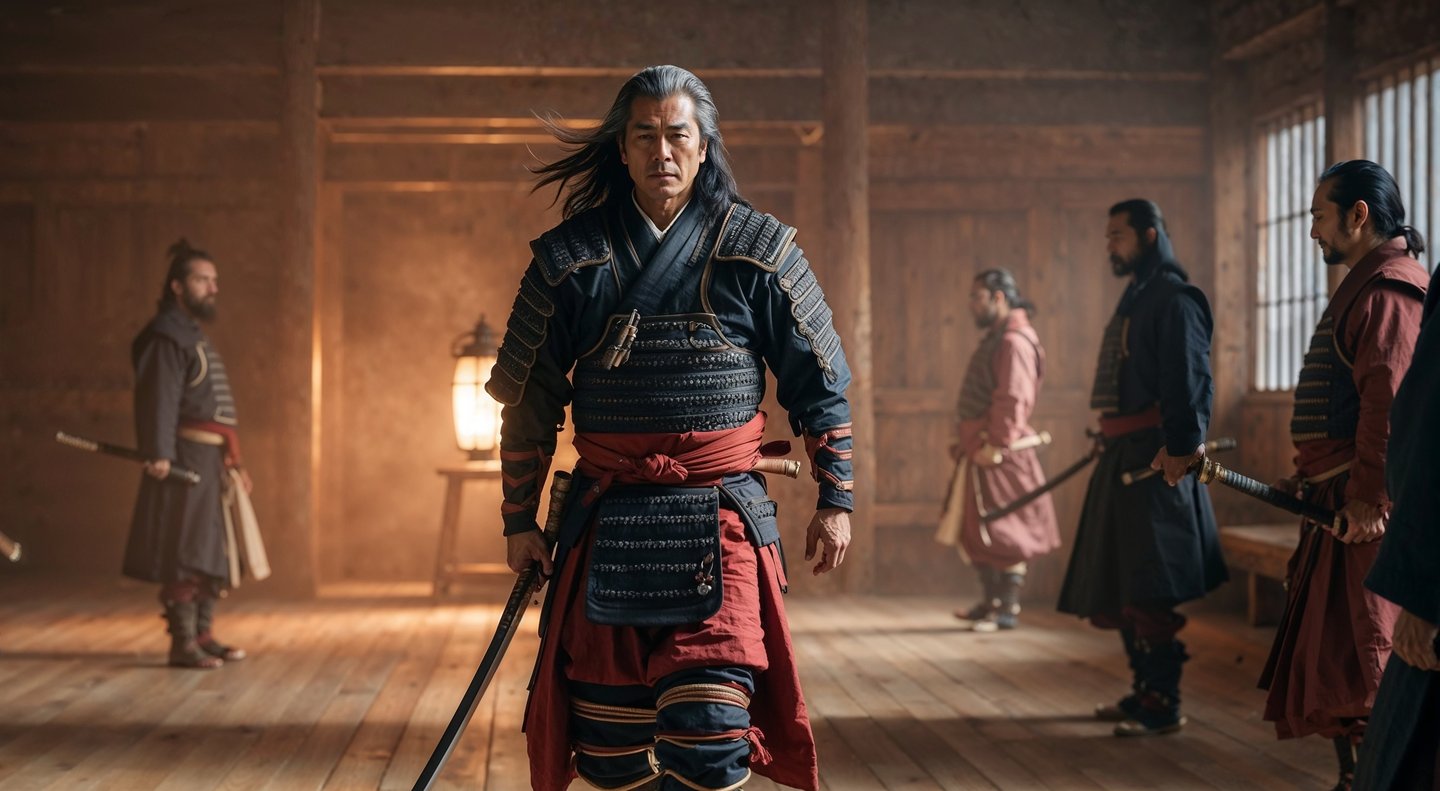

BATTLE READY:Full Tang,T10 steel is hand forged, clay tempered, water quenched, Real Hamon,and the blade has high hardness, easily meeting actual combat requirements.
Japan’s most famous tale of loyalty, vengeance, and honor, The 47 Ronin, tells the legendary story of a group of samurai who risk everything to avenge their fallen master. This unforgettable narrative has inspired countless retellings, including a Hollywood film starring Keanu Reeves, and remains a powerful symbol of courage and sacrifice in Japanese history.
The story begins in 1701, when Lord Asano, a nobleman of great integrity, strikes a court official during a heated dispute. His punishment is swift and unforgiving—he is ordered to commit ritual suicide (harakiri), his lands are seized, his family exiled, and his loyal samurai are left masterless, becoming ronin. For years, these 47 ronin lived as outcasts, appearing to accept their fate, but secretly plotting revenge. Their ultimate act of retribution not only honored their master but also cemented their place in history as an enduring example of loyalty and the samurai code of honor, bushido. In 47 Ronin, John Allyn’s masterful retelling, enriched by Stephen Turnbull’s insightful foreword, brings this timeless story to life with historical accuracy and vivid detail.
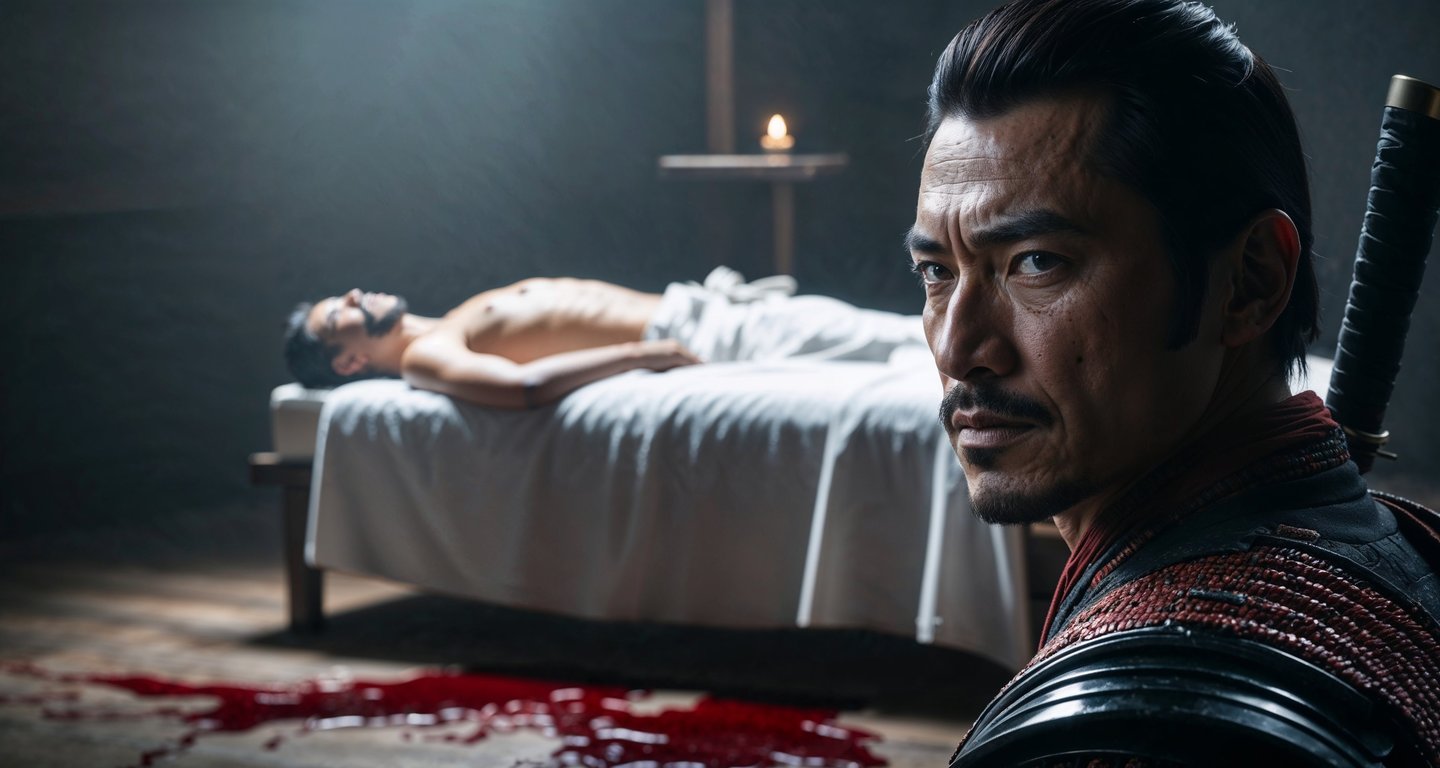

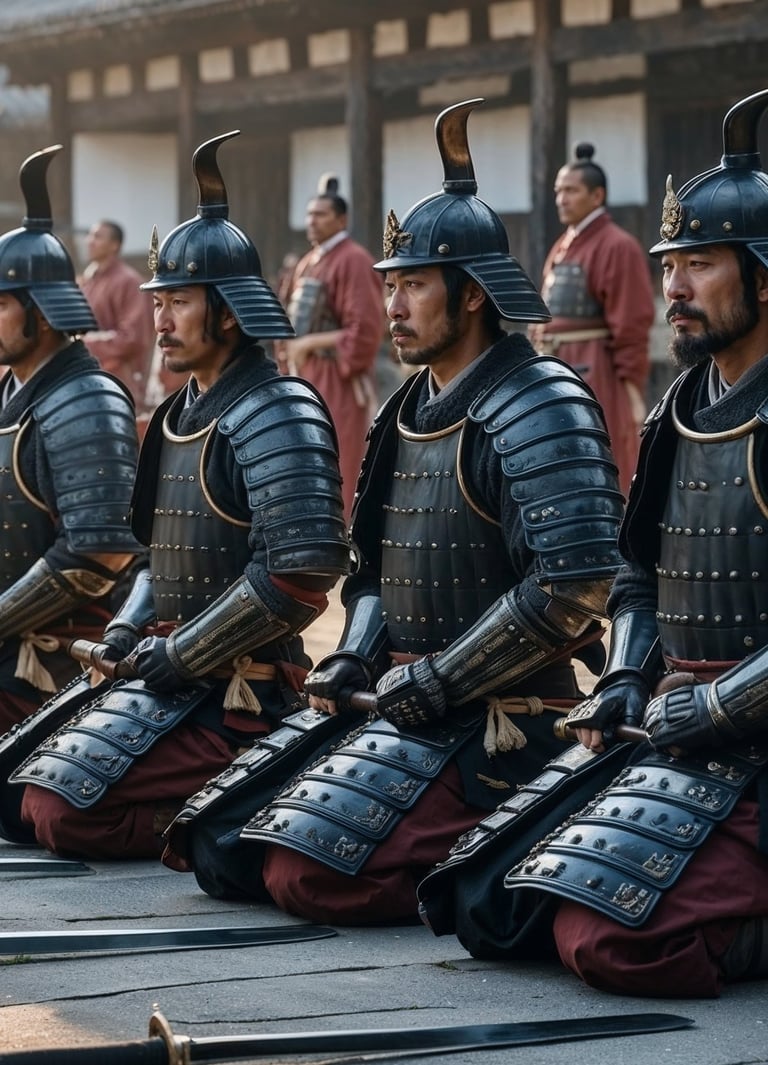

A Tale of Loyalty and Sacrifice
The story of the 47 Ronin endures not only as a gripping tale of revenge but also as a profound testament to loyalty, honor, and unwavering duty. Their mission to avenge their lord was not driven by anger or recklessness but by a deep, unbreakable bond between samurai and master, a bond that transcended even death. For the ronin, their lord’s death was not just a personal loss but a challenge to the very foundation of the samurai code, compelling them to act in the name of justice and integrity.
In their calculated and disciplined pursuit, the 47 ronin demonstrated that true justice is not achieved through haste but through patience, courage, and sacrifice. Their story continues to reach across centuries and cultures, reminding us of the enduring power of loyalty and the courage to stand by our principles.



